Wet LAB
Background
Wet LAB stands for Wet Lead-Acid Batteries, these are the same kind of battery as a standard car battery. The main focus of this project is to study the charge and discharge cycles of batteries. It was initially created to help determine what batteries would be the best to use for energy storage in the eGarden. All the power produced by the wind turbine and solar arrays is used to charge battery banks. This research has been ongoing since 2015.
Wet LAB Timeline
2016: Imaging of batteries


SEM images of lead acid plates after a complete discharge cycle.
The initial projects with the batteries mainly involved cutting them open and taking pictures to see how discharging batteries changed the surface of the plates.
2017: Measuring charging and discharging
Students created a system to automatically monitor the voltage, current, and temperature as the battery was run and made it available online.
This was accomplished using both Arduino and Raspberry Pi systems. The objective was to get data for graphing voltage, current, and temperature versus time. This data agreed with the published literature, confirming the accuracy of this system.
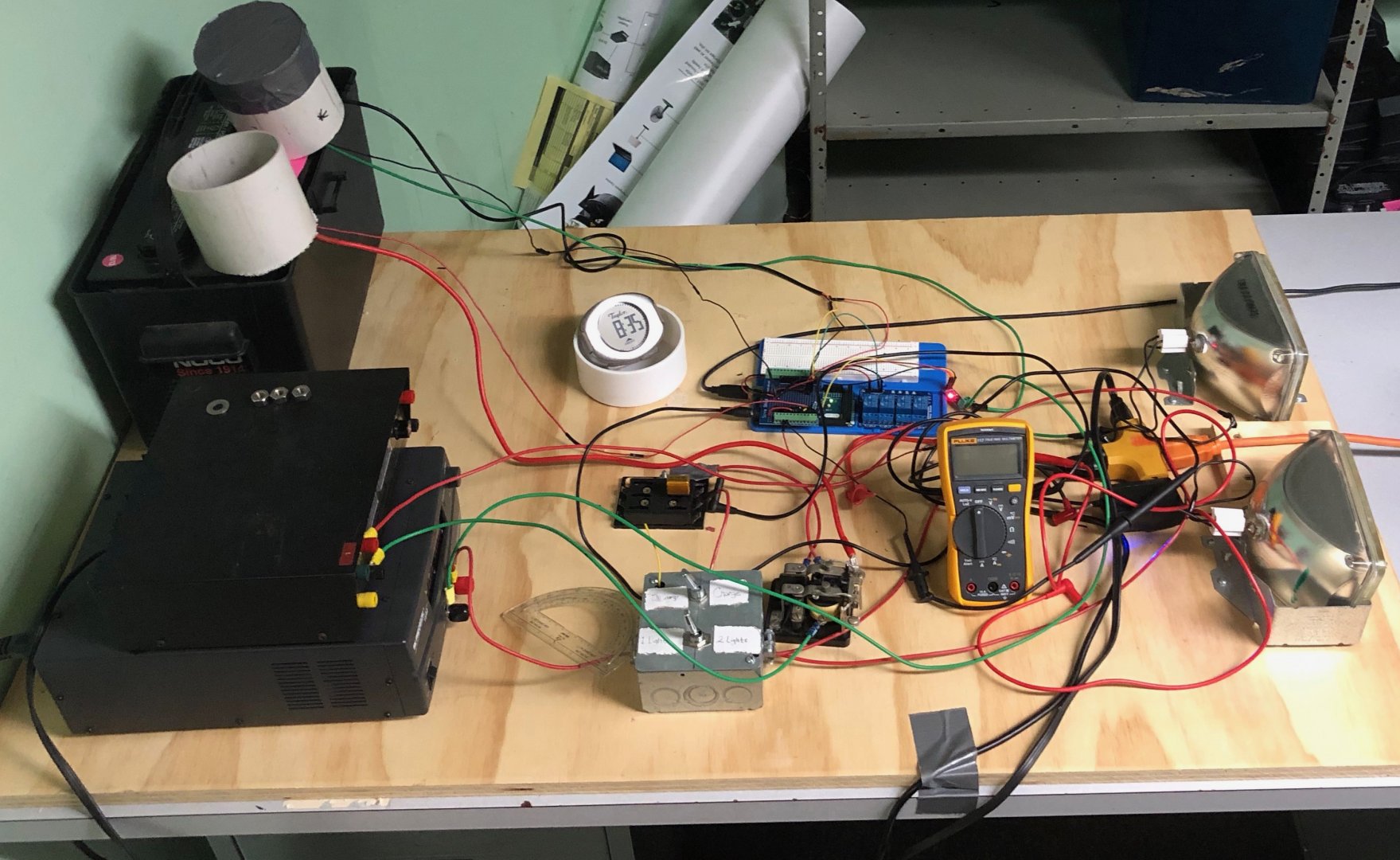
Set up for measuring charge and discharge of batteries.
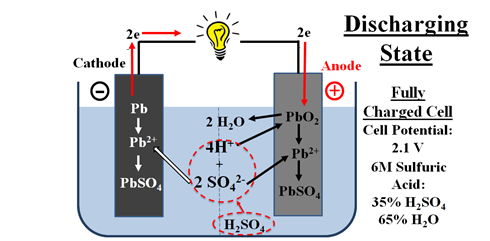
Diagram of a discharging battery.
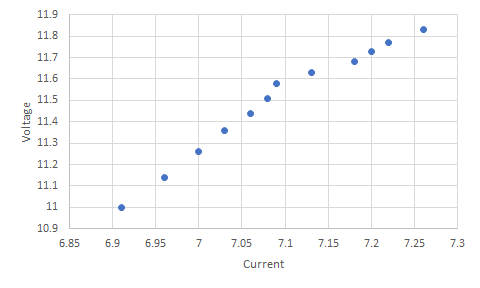
Charging curve for a lead-acid battery.
2018: Battery Lift System
During the summer of 2018 students developed a lift system so that they could lift the battery plates out of the acid periodically, to take measurements as the battery was charged or discharged, and to see how that affected weight of the plates.
This project involved gaining a knowledge of Arduino, since none of these students had coded with this program before.
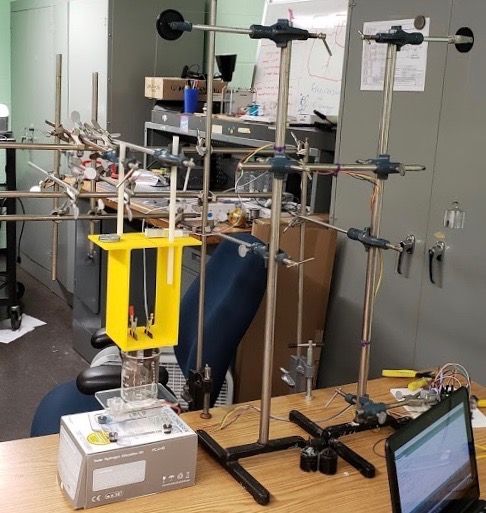
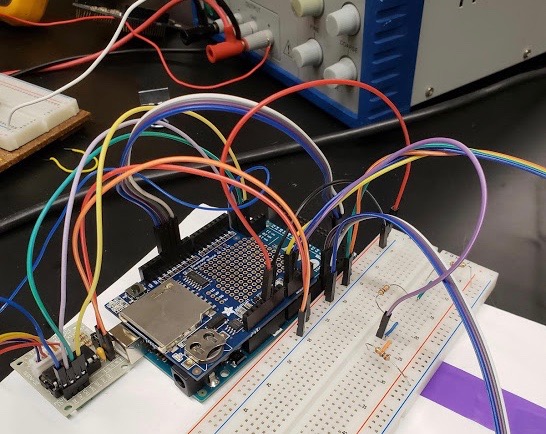
2019: Battery Lift System 2.0
The main objectives for the 2019 are to refine the previous efforts on the battery lift system and to use a sturdier part to do the lifting. Also, the code has to be refined from the previous summer and sensors calibrated to work with the new parts. Now that this has been completed, experiments can begin.
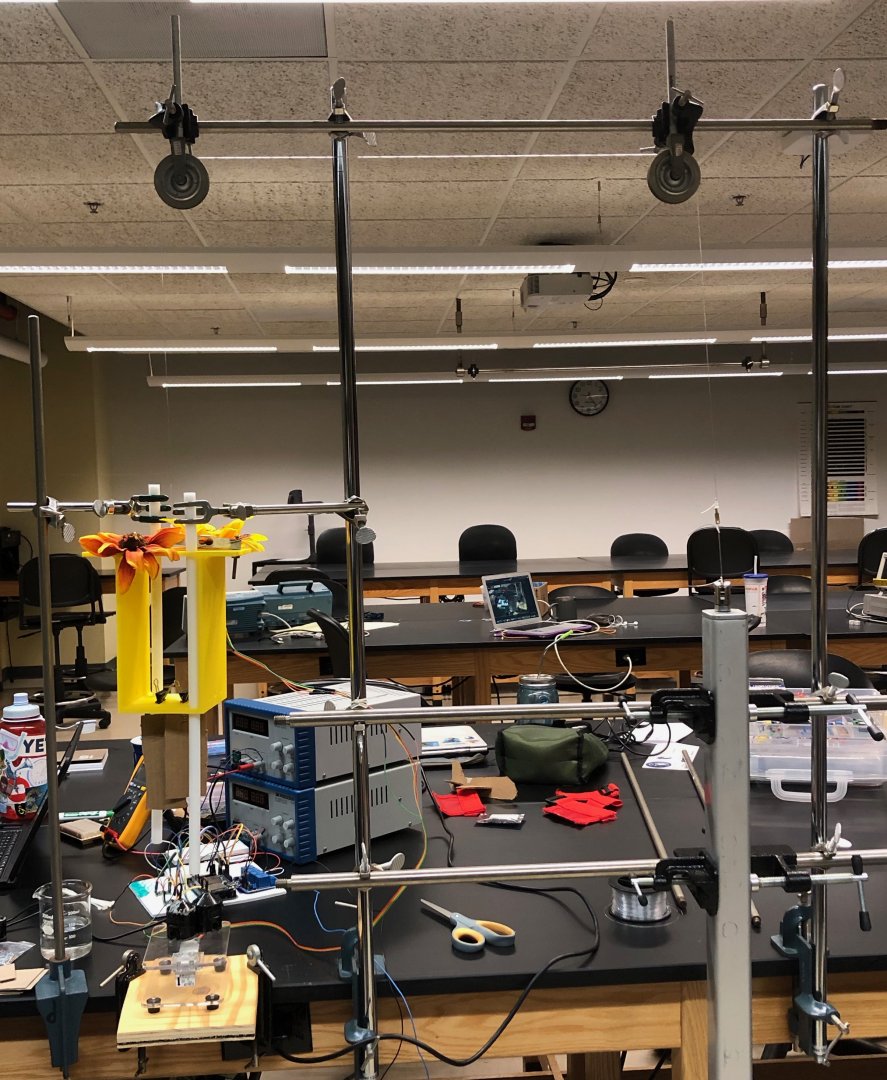
New lift system.
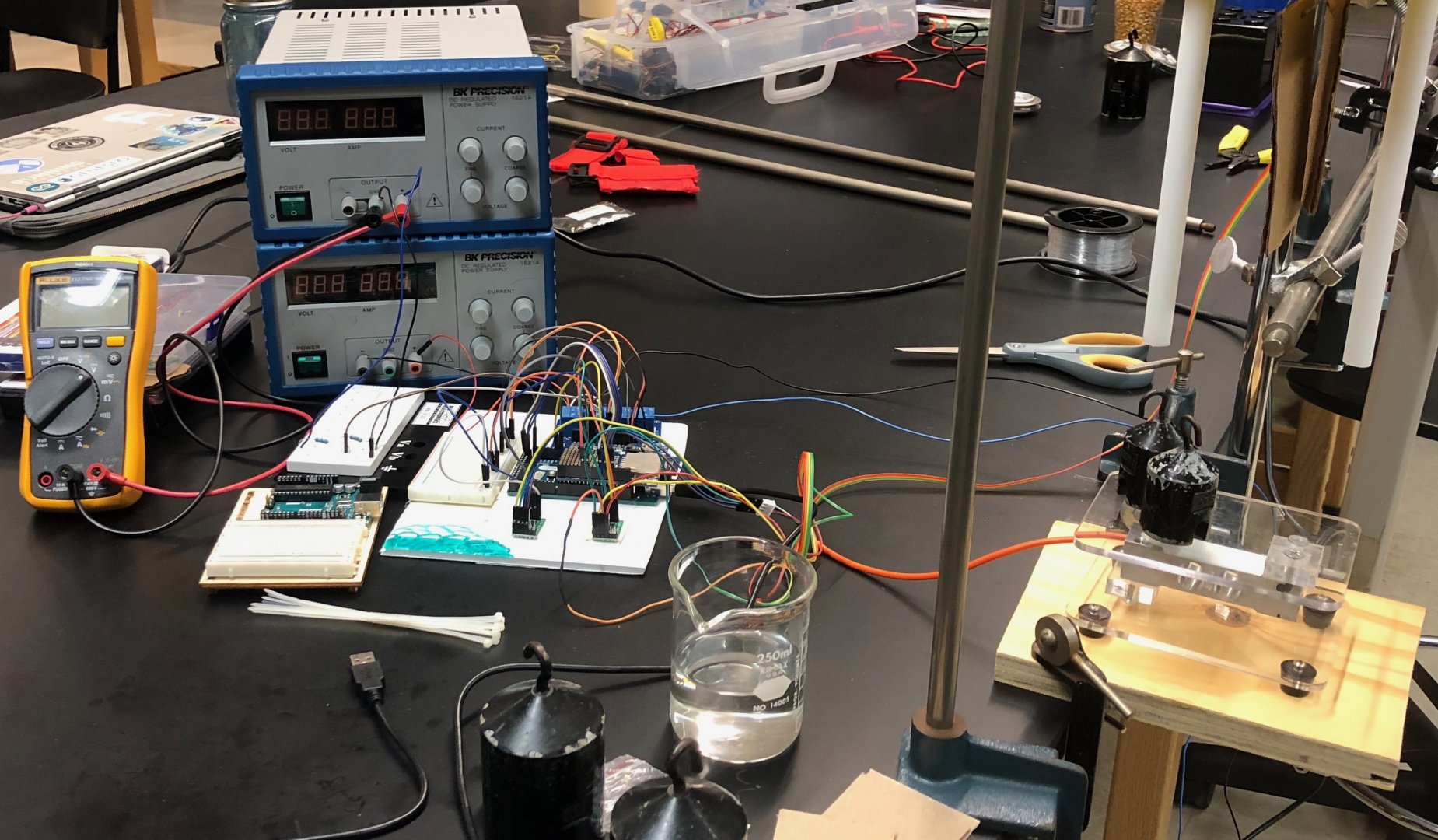
Arduino for new lift system.
